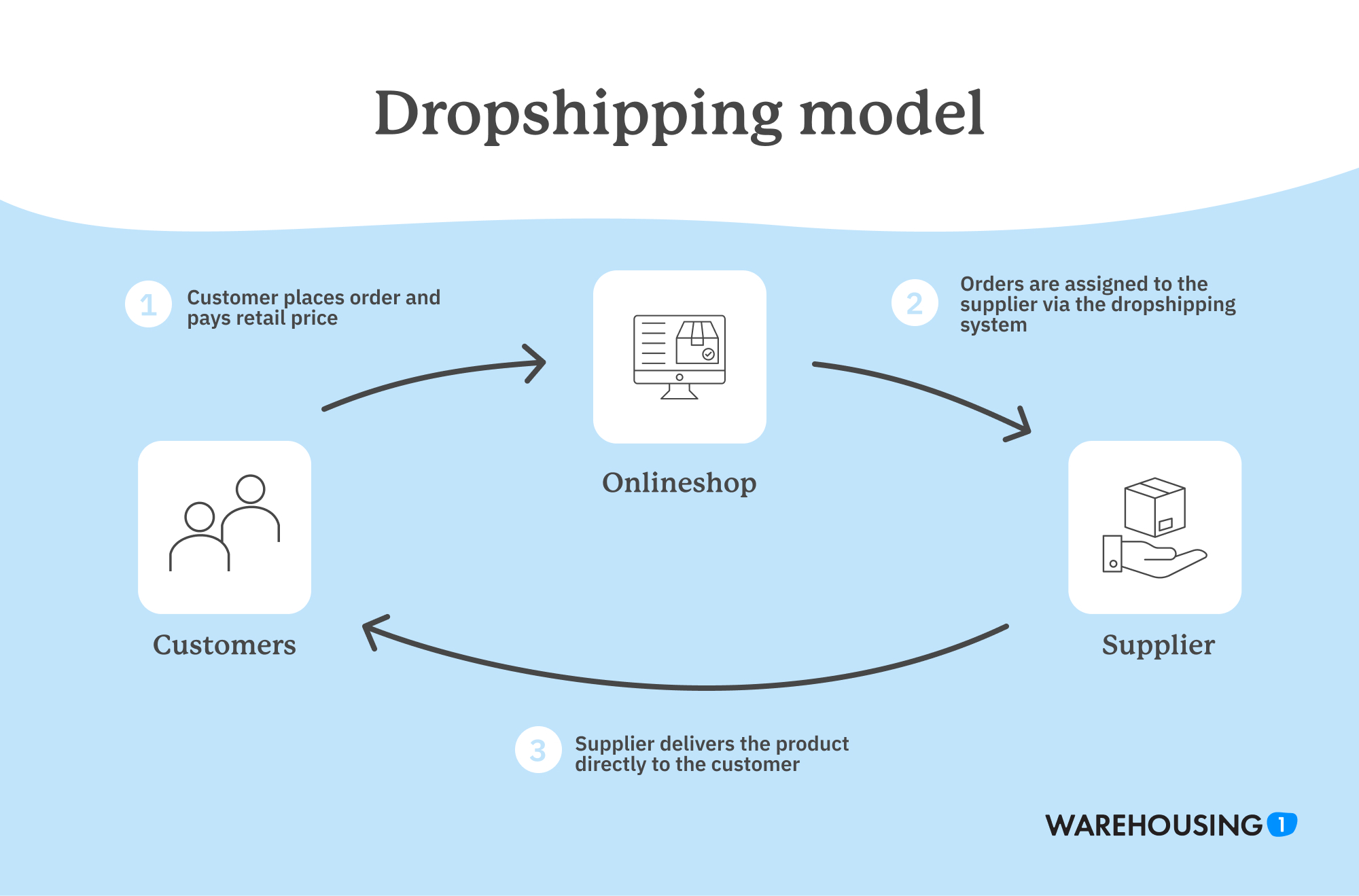Dropshipping as a business model has been around since the 1950s. Back then, orders came in over the phone, but today they come in online. With the help of the Internet and the resulting e-commerce, dropshipping quickly became more and more attractive and thus the competition also grew.
But many people are concerned that dropshipping may be a dying business model. And even if that's not the case, is dropshipping still viable for new e-commerce businesses today? We clarify these questions and more in this blog article.
Table of contents:
- Business models in ecommerce
- So why dropshipping?
- Advantages dropshipping
- Disadvantages Dropshipping
- Conclusion
Business models in ecommerce
With a Share of approx. 33 % of the entire e-commerce industry that use dropshipping as their primary business model, dropshipping is one of the most widespread online business models. But how is dropshipping different from regular online commerce?
Classic online trading
As a rule, a company buys from a manufacturer at a wholesale price or manufactures products itself and keeps them in stock. The store owner's task here is to manage the process from ordering to receiving the product. He has control over the quality and branding, but also high costs due to the storage of the products. Consumers visit the website and pay the retail price.
Dropshipping
A store that relies on dropshipping, on the other hand, has no physical warehouse. Orders are taken from the clientele at the retail price. This money is used to purchase products at wholesale prices from an external supplier. The supplier packages the products and then ships them directly to consumers.
In the dropshipping business, the online store acts as an intermediary between the supplier and the consumer.

Fulfillment by Amazon (FBA)
When using FBA the online retailer must pay for the inventory in advance. Amazon takes care of the storage, packaging and shipping of the product, as well as returns management and customer service. The contracts with Amazon are inflexible and expensive in the process - and they go hand in hand with
Print-on-Demand
Print-on-demand has great similarities to the dropshipping model. The company creates custom designs for so-called white-label products (items from one manufacturer that are rebranded by other companies). When a customer makes a purchase, an order is sent to the supplier, who then prints, creates and ships the customized product. The main difference with dropshipping here is the customization of the products. This provides stronger branding, but is also associated with higher costs.
So why dropshipping?
Just like the other business models, dropshipping brings with it a number of advantages and disadvantages. We have compiled a few of the most important points.
Advantages dropshipping
Costs
Unlike most business models, opening a dropshipping business requires a comparatively small amount of start-up capital. This makes it ideal for budding entrepreneurs. The fixed costs are also low. Since the products do not have to be purchased in advance and therefore do not have to be stored temporarily, the store operator saves costs for premises, personnel and equipment and can invest this money elsewhere.
Risks
Due to the low start-up capital, the dropshipping business carries a low risk for newcomers. Even if no quick sales can be achieved, the loss remains low because there is no inventory to liquidate. This makes dropshipping ideal for testing the popularity of certain products or different marketing strategies without much risk.
Flexibility
Be it the type of product or the workplace - the dropshipping business offers flexibility. Thanks to a wide range of products and the purchase of products on demand, without a fixed stock, the change to trend products is possible without major detours. What's more, dropshipping can be done from the comfort of your own home. All retailers really need is a good Internet connection and the ability to stay in touch with the supplier and consumers.
Order processing
The warehousing, packaging and shipping of products is handled by a third-party provider, leaving more time for other areas such as customer service or marketing.
Disadvantages Dropshipping
Shipping and product quality
Due to the external order processing via a third-party provider, the retailer has little influence on the proper shipping or the quality of the products. Many providers do not come from Europe and thus have long delivery times. If a product arrives late or even damaged, customer satisfaction suffers and so does the reputation of the merchant. Good customer service is the be-all and end-all here.
Communication
In the event of complaints, it must be possible to trace orders as quickly as possible in order to find a satisfactory solution for the customer. In the role of the middleman, however, this is difficult. Here, it is important to establish good communication with the third-party supplier in order to be able to provide feedback quickly.
Profit margin
Since the products are purchased on demand, the unit cost of each product is higher and the profit is smaller. This is further complicated by the numerous competitors on the dropshipping market. Already established dropshippers entice customers with low prices. The focus on niche or trend products can help here.
Branding
Retailers have little opportunity to personalize the product or the packaging. In most cases, the brand name can only be found as the sender on the package. However, in the case of a longer cooperation with a partner, there may be more opportunities for branding.
Conclusion
The popularity of dropshipping has more than doubled in 2022 compared to 2019. No wonder, because comparatively low costs, flexibility and low risk make the business model very beginner-friendly.
However, this very popularity also creates a lot of competition in return. A good marketing strategy should not be underestimated. Communication between supplier and retailer is just as important, since the supplier handles the bulk of the ordering process.
So is dropshipping worth it?
With the right strategy, definitely. The online business is booming, and as a newcomer, dropshipping offers a low-risk start in digital commerce. However, long delivery times and communication channels can be the downfall, for long-term success, the fulfillment of your own inventory with a suitable service provider is the way to go.
If you are looking for a service provider to handle the logistics of your online store, you have come to the right place.
With Warehousing1, you get e-commerce fulfillment, warehouse logistics and digital management from a single source.



